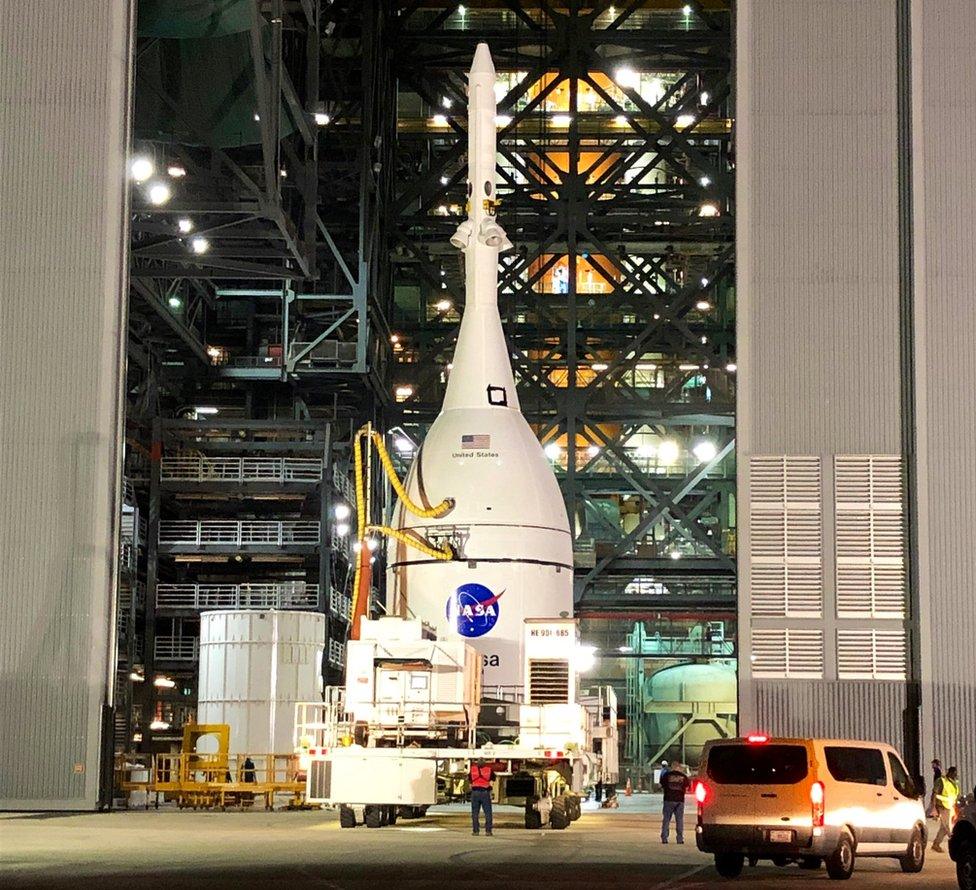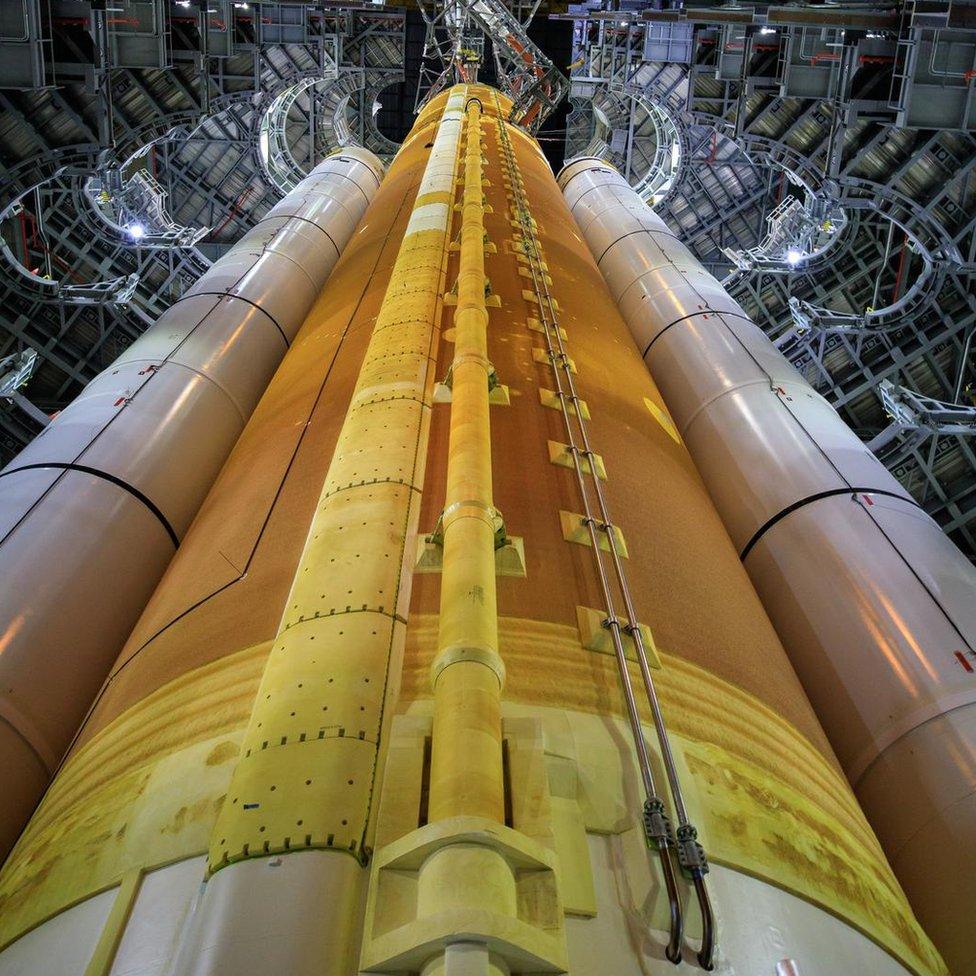Orion: Nasa's Moon ship ready to be attached to rocket
- Published

Nasa's next-generation spaceship is ready to be attached to a rocket that should send it to the Moon this year or in early 2022.
On Monday, the Orion spacecraft was moved between buildings at Florida's Kennedy Space Center ahead of being lifted on to the powerful Space Launch System (SLS) rocket.
For its upcoming flight, Orion will fly around the Moon without astronauts.
It's part of a US plan to return people to the lunar surface this decade.
This programme is called Artemis - after the sister of Apollo - and could help establish a long-term human presence on Earth's only natural satellite.
Allow X content?
This article contains content provided by X. We ask for your permission before anything is loaded, as they may be using cookies and other technologies. You may want to read X’s cookie policy, external and privacy policy, external before accepting. To view this content choose ‘accept and continue’.
The Orion vehicle that will be used on the Artemis-1 mission was transferred to the famous cuboid Vehicle Assembly Building (VAB) at Kennedy.
It was being housed at another facility on the same site, where engineers had attached the spacecraft's launch abort system, designed to propel Orion and its astronauts away from the rocket if an emergency occurs during a crewed launch.
Orion is the last key element to be lifted on to the 98m (322ft) -tall SLS launcher, which engineers have been assembling in the VAB since December 2020.
The three-week Artemis-1 mission will test the SLS and Orion before astronauts are allowed aboard for Artemis-2, which will loop around the Moon in late 2023.

The Orion spacecraft will be stacked atop the SLS rocket in coming weeks
Artemis-3 will see astronauts land on the lunar surface for the first time since the Apollo 17 mission in 1972. Nasa has selected Elon Musk's Starship as the vehicle that will carry humans down from lunar orbit to the surface.
The landing mission is currently scheduled for 2024, though many observers expect that date to slip.
The metal frame for the Orion spacecraft that will be used for that mission also arrived at Kennedy Space Center earlier this month.
The Artemis-3 mission will carry the first woman to walk on the surface, along with the next man. The Artemis programme will also see the first person of colour travel to the Moon.
Follow Paul on Twitter., external